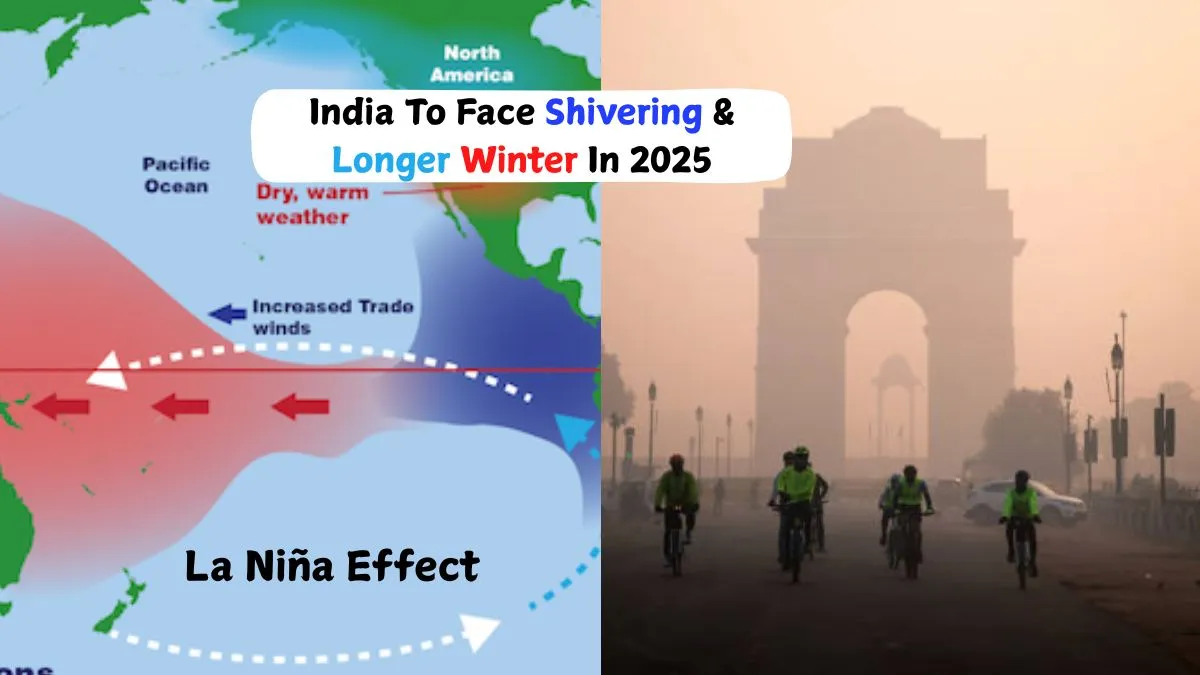- By Aditi Priya Singh
- Wed, 08 Oct 2025 01:03 PM (IST)
- Source:JND
All About La Niña Effect: This winter, get ready to shiver a bit more! According to Weather experts, India may experience shivering and a longer winter season in 2025 due to a climatic phenomenon known as La Niña. It's a natural oceanic phenomenon that happens when the surface waters in the central and eastern Pacific Ocean cool down more than usual, altering wind patterns and the weather around the world.
India's climate is greatly impacted by La Niña, particularly in terms of rainfall, temperature and monsoon. Opposite to El Niño, which brings heat and dry spells, La Niña frequently results in cold winters, heavy rains and stronger monsoons. Temperatures may drop more than usual in 2025 due to a moderate to strong La Niña phase, according to meteorologists, especially in North and Central India.
Let’s understand what exactly this La Niña effect is, how it works, and why it could make India’s winter season longer and colder than before.
What is the La Niña Effect?
La Niña is a climate phenomenon that occurs every few years in the Pacific Ocean. It is the cool phase of the climate cycle called El Niño–Southern Oscillation (ENSO). Along the South American coast, trade winds intensify and cold ocean water rises to the surface during La Niña. Rainfall, storms and global temperatures are all impacted by this cooling.
-1759908650173.jpg) La Niña condition (Image: NASA.gov)
La Niña condition (Image: NASA.gov)
 Normal conditions (Image: NASA.gov)
Normal conditions (Image: NASA.gov)
How La Niña Affects Global Weather?
La Niña brings cooler Pacific waters, impacting global weather. It causes heavy rains in Australia and floods in South America, while bringing droughts to the southern US and heavy snowfall in the northern US. This affects agriculture, economies, and daily life worldwide. Here are important changes in the weather that are affected by La Niña.
1. Causes cooler temperatures in the Pacific Ocean.
2. Leads to more rainfall in Asia and Australia.
3. Increases the chances of cyclones in the western Pacific.
4. Causes droughts in South America and parts of Africa.
5. Triggers colder winters in North America and South Asia.
Impact Of La Niña En India
According to meteorologists, La Niña will peak in late 2025, which could cause winter to retreat later than usual and February to be colder than in past years. La Niña typically brings cold winters and a good monsoon to India. Here’s how it affects different regions:
Northern India: Temperatures can drop below normal, with cold waves and foggy mornings.
Central India: Longer winter months and dry, cool air.
Southern India: Sometimes experiences unseasonal rains.
Himalayan region: Heavy snowfall expected, especially in January–February.
How 2025 Winter May Be Different?
Longer duration: Winter may extend into early March.
More cold waves: Northern plains could see more frequent cold spells.
Heavy snowfall: Hill stations like Shimla and Manali may get record snow.
Foggy conditions: Delhi, Punjab, and Haryana may face dense fog.
Lower day temperatures: The average temperature could drop by 1–2°C below normal.
ALSO READ: Winters Likely To Get Harsh This Year As La Nina Phenomena Set To Intensify, Warns IMD
The La Niña effect serves as a reminder of how intertwined Earth's systems are. Ocean temperatures thousands of miles away determine how cold Indian nights will be. Even though the 2025 winter may feel particularly cold, northern India will see beautiful snowfall, healthier crops and improved air quality. Therefore, prepare your blankets because a longer, colder and more memorable winter might be approaching!

